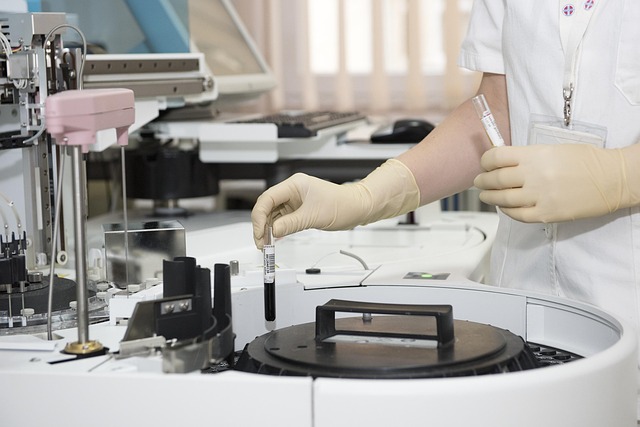Medical offices require robust Workers' Compensation (WC) plans to safeguard employees from work-related injuries, illnesses, and risks like patient lifting, biohazardous materials, and high stress. Non-compliance can lead to fines, legal issues, and damaged reputations. Key steps for implementing a compliant WC system include risk assessment, tailored safety protocols, choosing specialized insurance providers, efficient claims management, regular training, and staying updated on local laws. Effective workplace injury management involves immediate first aid, detailed record-keeping, centralized documentation, and staff accountability. Proactive strategies enhance employee security, foster safety cultures, and ensure legal compliance in medical offices.
In the dynamic landscape of healthcare, ensuring compliance-ready workers’ compensation (WC) for clinics is no longer an option but a necessity. This comprehensive guide delves into the unique aspects of WC for medical offices, highlighting the importance of compliance in mitigating risks and potential liabilities. From identifying workplace hazards to implementing effective strategies, we explore best practices for documenting injuries and fostering a proactive safety culture. Discover how these measures can enhance employee well-being and protect your clinic’s financial health in the event of an injury.
- Understanding Workers Comp for Medical Offices: A Comprehensive Overview
- The Importance of Compliance in Workers' Compensation Programs
- Identifying Risks and Potential Liabilities in Clinical Settings
- Strategies to Implement a Compliance-Ready Workers Comp System
- Best Practices for Documenting and Managing Workplace Injuries
- Enhancing Employee Safety and Well-being Through Proactive Measures
Understanding Workers Comp for Medical Offices: A Comprehensive Overview

Workers’ compensation (WC) for medical offices is a vital aspect of ensuring a safe and compliant work environment, providing essential protection for employees in healthcare settings. It’s more than just insurance; it’s a legal requirement designed to offer financial and medical benefits to workers who suffer injuries or illnesses related to their jobs. In the case of clinics and medical offices, WC covers a wide range of potential hazards, from physical strains and repetitive stress injuries to exposure to infectious diseases.
A comprehensive understanding of medical office WC involves recognizing various risks unique to healthcare professions. Employees in these settings may face challenges such as lifting patients, dealing with biohazardous materials, or experiencing high-stress work environments. Employers must carefully assess these risks and implement preventive measures, ensuring they provide the necessary training, equipment, and support to mitigate potential WC claims. By staying proactive and compliant with WC regulations, medical offices can foster a safer workplace and maintain a positive reputation in their industry.
The Importance of Compliance in Workers' Compensation Programs

In the realm of healthcare, ensuring compliance with workers’ compensation (WC) regulations is paramount for medical office operators. WC programs are designed to protect both employees and employers by providing financial and medical benefits in cases of work-related injuries or illnesses. Compliance goes beyond legal obligation; it’s a cornerstone of ethical practice. Non-compliance can lead to hefty fines, damaged reputations, and even legal repercussions.
For medical offices, compliance-ready workers’ comp is essential for maintaining a safe and supportive environment for medical office workers comp claims. This involves staying abreast of evolving WC laws, implementing robust safety protocols, and fostering an open culture where employees feel comfortable reporting injuries or health issues without fear of retribution. By embracing these practices, healthcare providers can minimize risks, streamline claim processes, and ultimately, protect the well-being of their workforce.
Identifying Risks and Potential Liabilities in Clinical Settings

In clinical settings, identifying risks and potential liabilities is paramount for ensuring a safe and compliant work environment. Medical office workers comp forms an integral part of risk management strategies. Every clinic must assess unique hazards present in their operations, from handling sharp objects to managing patient interactions. Understanding these risks is crucial for selecting appropriate coverage that aligns with specific needs.
For instance, medical professionals face increased exposure to injuries, including needlestick and slip-and-fall incidents. Proper training and equipment can mitigate these dangers, but they still necessitate comprehensive workers comp insurance. Additionally, clinical settings often deal with sensitive patient information, requiring measures to protect against data breaches and potential lawsuits. By identifying and addressing such risks proactively, clinics can safeguard their operations and employees while adhering to legal and ethical standards in the medical office workers comp domain.
Strategies to Implement a Compliance-Ready Workers Comp System

Implementing a compliance-ready workers compensation (Workers Comp) system for medical offices involves a strategic approach to ensure adherence to legal requirements and best practices. Firstly, conduct a thorough risk assessment to identify potential hazards specific to your clinic’s operations. This includes evaluating tasks performed by medical office workers, such as patient handling, use of equipment, and exposure to infectious diseases. Based on this assessment, develop comprehensive safety protocols tailored to mitigate identified risks.
Secondly, select a Workers Comp insurance provider that aligns with your clinic’s needs. Look for carriers offering specialized coverage for medical offices, ensuring compliance with industry-specific regulations. Implement an efficient claims management process to streamline the handling of worker injuries or illnesses. Regular training sessions for employees on safety procedures and policy updates will foster a culture of compliance, empowering staff to take proactive measures for their well-being.
Best Practices for Documenting and Managing Workplace Injuries

Effective documentation and management of workplace injuries are vital practices for any clinic aiming to maintain compliance with workers’ compensation regulations. When an injury occurs in a medical office, it’s crucial to act swiftly and diligently. The first step is to ensure immediate and appropriate first aid is provided to the affected worker. Following this, detailed records should be kept of all incidents, including dates, times, descriptions of injuries, and witness statements. These documents are critical for supporting workers’ compensation claims and facilitating a smooth claims process.
Best practices suggest designating a specific person or team responsible for managing these records, ensuring consistency and accuracy. All relevant information, from initial reports to medical evaluations, should be centralized and easily accessible. Regular training sessions for staff on proper documentation procedures can help prevent errors and promote a culture of safety and accountability. Additionally, staying up-to-date with local workers’ compensation laws and guidelines is essential to ensure fair treatment for both employees and employers.
Enhancing Employee Safety and Well-being Through Proactive Measures

In today’s digital era, ensuring employee safety and well-being in medical offices is more crucial than ever. Proactive measures, such as comprehensive worker’s compensation (medical office workers comp) plans, play a pivotal role in fostering a secure environment for healthcare professionals. By implementing these strategies, clinics can enhance their compliance readiness while promoting a culture of safety among their staff.
Regular training sessions and education on workplace hazards are essential components of this approach. Educating employees about potential risks specific to medical settings empowers them to take preventive actions. Additionally, encouraging open communication channels allows workers to report accidents, injuries, or health concerns promptly. This proactive mindset not only reduces the likelihood of incidents but also ensures that any issues are addressed swiftly, ultimately contributing to a happier and healthier workforce.
